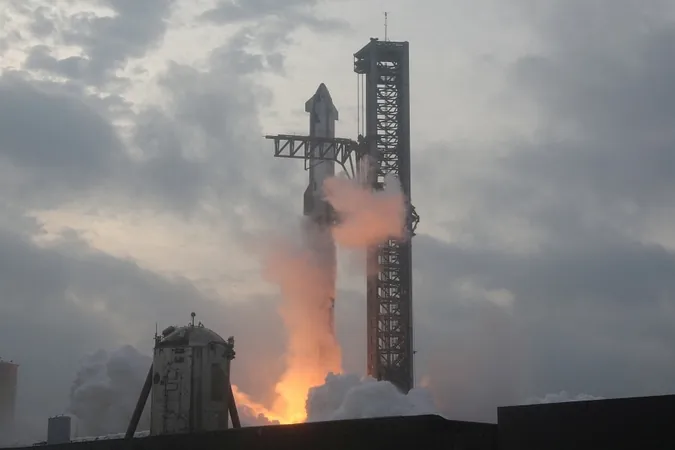
Breaking News: SpaceX's Ambitious Mars Mission Set for Launch in Just Two Years!
2024-09-22
Introduction
In a daring announcement, SpaceX CEO Elon Musk revealed on September 22 that the company plans to embark on five uncrewed Starship missions to Mars within the next two years. Musk shared this information with the world via a post on social media platform X, igniting excitement among space enthusiasts and industry experts alike.
Timeline of Missions
The timeline is strategically aligned with the next Earth-Mars transfer window, a significant opportunity for interplanetary travel that is crucial for maximizing fuel efficiency and minimizing travel time. Musk had previously stated that the first uncrewed missions would utilize this optimal launch window, making 2025 a pivotal year for SpaceX's Mars ambitions.
Crewed Missions Outlook
Musk also shared insights regarding the potential timeline for future crewed missions, indicating that their success will hinge on the outcomes of these initial uncrewed flights. If all goes as planned, crewed missions could take off four years later; however, should any challenges arise, the timeline could extend by an additional two years.
Starship Journey
SpaceX's Starship program has faced fluctuations in its projected timelines, with Musk historically suggesting earlier this year that the first uncrewed landing on Mars could happen within five years, potentially leading to a crewed landing within seven. He acknowledges the complexities of space exploration, often adjusting expectations based on technical and logistical hurdles.
Recent Milestones
A significant milestone for SpaceX occurred in June when a Starship rocket successfully completed a fiery, hypersonic return from space, achieving a notable landing in the Indian Ocean. This successful test mission marked a leap forward for the rocket on its fourth attempt and is a testament to SpaceX's commitment to innovation and resilience in the face of challenges.
Future of SpaceX and NASA
Musk’s vision for Starship is ambitious: he hopes it will evolve into a versatile, next-generation spacecraft capable of transporting people and cargo to the Moon as part of NASA’s Artemis program and eventually facilitating human exploration of Mars. However, it's worth noting that NASA recently postponed its Artemis 3 mission, which is set to utilize SpaceX's Starship for the first crewed lunar landing in 50 years, now scheduled for September 2026, a delay from its initial target of late 2025.
Commercial Space Travel Challenges
Additionally, in a related event, Japanese billionaire Yusaku Maezawa announced in June the cancellation of his planned private mission around the Moon, originally intended to leverage SpaceX's Starship. His decision was prompted by uncertainties regarding the rocket's development schedule, highlighting the complex and evolving landscape of commercial space travel.
Conclusion
As SpaceX races towards these monumental goals, the world is poised to witness whether Musk’s ambitious timelines can hold up amidst the challenges of aerospace engineering. The stakes have never been higher, and eyes will continue to be glued to the stars!



 Brasil (PT)
Brasil (PT)
 Canada (EN)
Canada (EN)
 Chile (ES)
Chile (ES)
 España (ES)
España (ES)
 France (FR)
France (FR)
 Hong Kong (EN)
Hong Kong (EN)
 Italia (IT)
Italia (IT)
 日本 (JA)
日本 (JA)
 Magyarország (HU)
Magyarország (HU)
 Norge (NO)
Norge (NO)
 Polska (PL)
Polska (PL)
 Schweiz (DE)
Schweiz (DE)
 Singapore (EN)
Singapore (EN)
 Sverige (SV)
Sverige (SV)
 Suomi (FI)
Suomi (FI)
 Türkiye (TR)
Türkiye (TR)